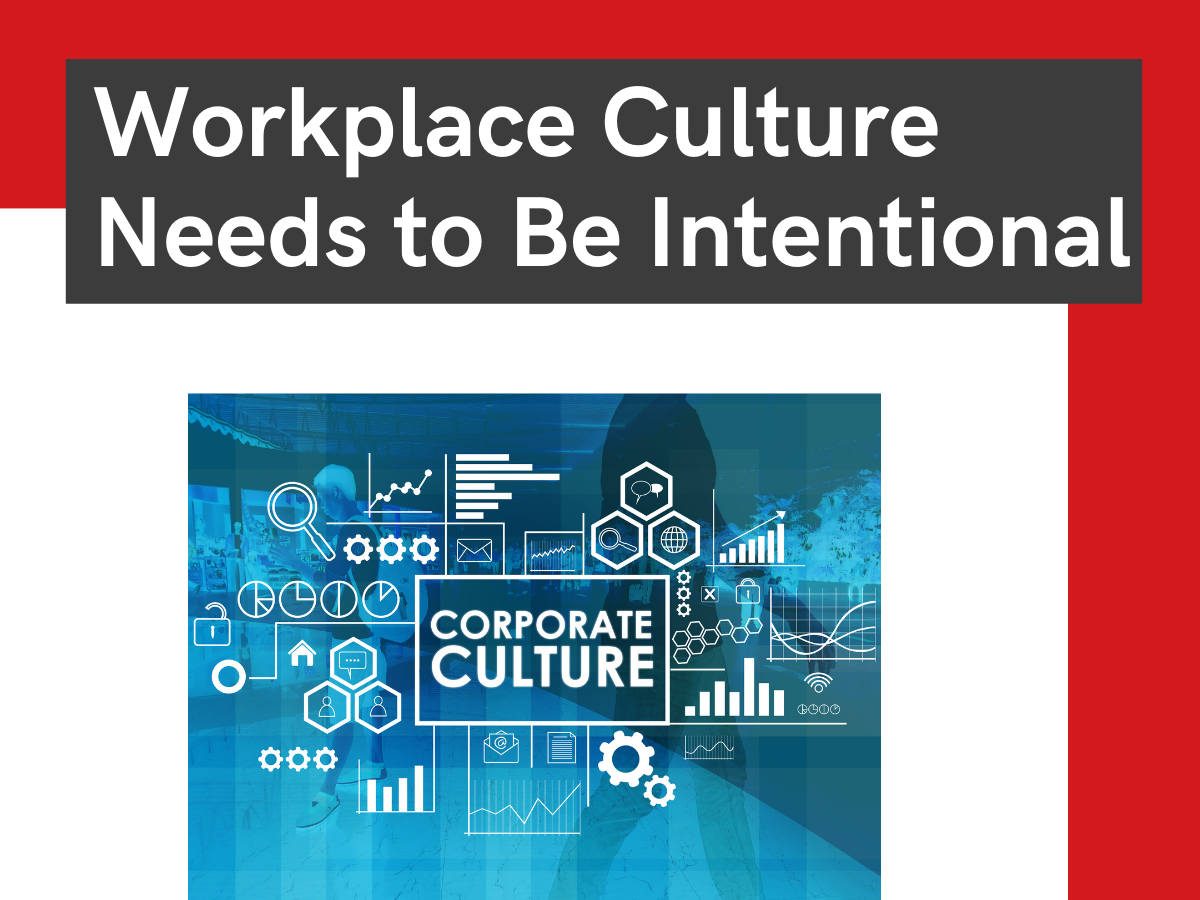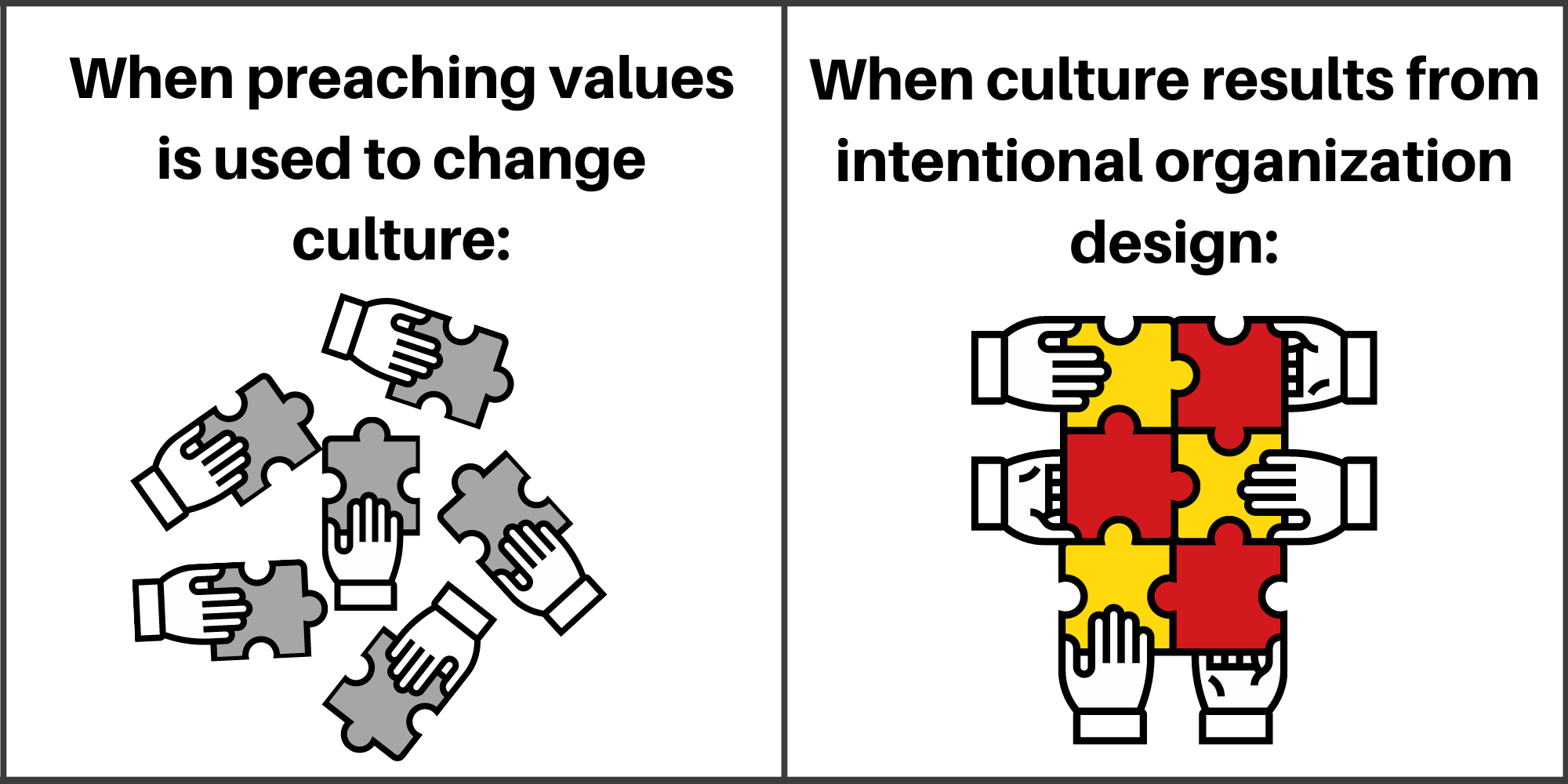
Changing workplace culture is not as simple as organizing happy hours and putting ping pong tables in breakrooms. While this may temporarily boost morale, an organization’s culture isn’t created and maintained through social events. Social events showcase the culture at play but do not advance any changes to an organization’s culture.
A co-worker recently told me about a company she previously worked at that organized departmental outings once a year. These all-day events focused on getting out of the office, partaking in cooking classes and amusement parks, although it was effective in boosting team comradery did not necessarily change their culture. Companies need to provide more foundational changes to their operating model if they expect to embark on changing work culture.
What is Culture in an Organization?
“An organization’s culture defines the proper way to behave within the organization. This culture consists of shared beliefs and values established by leaders and then communicated and reinforced through various methods, ultimately shaping employee perceptions, behaviors and understanding.” This definition of organizational culture taken from an SHRM article is a perfect example of how organizational culture is typically viewed as a hierarchical mandate. A common misconception is that an organization’s culture can be directly changed as an effective solution to solving problems within a business. Oftentimes management may think the problem lies in a company’s culture, but it generally stems from core aspects of how the organization is put together. Culture should not be viewed as input for change but rather viewed as an output of an organization’s design. Viewing workplace culture through this lens will allow leaders to achieve desired cultural changes in the workplace, more effectively.
“Everyone on the team plays an equal role. My role is to create the wave and everyone on our team keeps the wave going.”
– William Wang, Founder, Vizio
How to Change the Culture of a Workplace
To successfully change an organization’s culture, businesses should look at their operating model first. An operating model is an organization’s operational blueprint of how it brings value to its customers. It is the rhythm and pace of the day-to-day business including what work gets done, how it gets done, how it configures itself and how it’s managed. An organizations operating model is what will enable your other organizational processes such as your people process and the way people are rewarded and recognized. These elements in an organization properly fit together, output the foundation of an organization’s culture. Many companies will espouse what a wonderful culture they have, but they cannot always point to the drivers behind that culture. Workplace culture is not just about how people interact, but the way work actually gets done. When you aren’t intentional about creating a specific culture, a culture will inevitably emerge as a result of how your business operates whether you like it or not.
There is no one size fits all culture and different cultures will work better at different companies. Leaders must spend time thinking about what workplace culture will fall in line with their business values and strategy. The desired values and behaviors that an organization wishes to achieve must be set at the beginning of the change process as criteria that must be reflected in any future changes to the operating model. Setting these parameters or criteria upfront for changes to the operating model helps ensure that core social values get implemented.
“It begins with describing the behaviors that reflect desired social and economic results and support the brand promise an organization makes to its stakeholders (including customers and stakeholders). These behaviors are rooted in the strategy set by the board and the top management team. But it doesn’t stop there. Generating and reinforcing those behaviors happen when executives create an environment – strategy, structure, processes, and incentives – that encourages goal relevant and accountable behavior.” (“Our (Recent and Misguided) Obsession with Culture”, Worley & Glymph 2017).
“Our secret weapon for building the best culture is open and honest feedback.”
– Gina Lau, Team Operations, HelloSign
Workplace Culture Change Reflects the Desired Change
The process of culture change in the workplace must also reflect the change desired. For example, if an organization is wanting to change to a more collaborative culture then the process for bringing about this change must be a collaborative process and pull people in all parts of the business to create this shift. While leadership is largely involved in setting the cultural direction their business should be headed toward, the more the rest of the organization can be involved with creating the company culture change, the better the change will be. We firmly believe that people support what they help create.
It is wishful thinking for a leadership team to think that company culture change can happen from a few top-down communications and some HR incentives. Workplace culture cannot just be reinforced by messages that people see in the hallways or on pretty PowerPoint slides. Changing the culture of a workplace must be enabled at the operating model level and viewed as an output of an organization’s design. By viewing culture as an output of an organization’s design, organizations can more effectively bring about real change throughout its system. ON THE MARK seeks to educate people about the importance of organization design work and show that an alternative solution to changing work culture exists.
“In this ever-changing society, the most powerful and enduring brands are built from the heart. They are real and sustainable. Their foundations are stronger because they are built with the strength of the human spirit, not an ad campaign. The companies that are lasting are those that are authentic.”
– Howard Schultz, CEO, Starbucks
Dallin Whitfield was a Consultant at ON THE MARK.
OTM has been in business since 1987 and is a leading organization design firm. Over our 31 years in business, OTM has completed close to 450 redesigns around the globe across most industries. Our experience and passion for collaborative business transformation is supported by pragmatism, systems thinking, and a belief in people that’s unparalleled.


